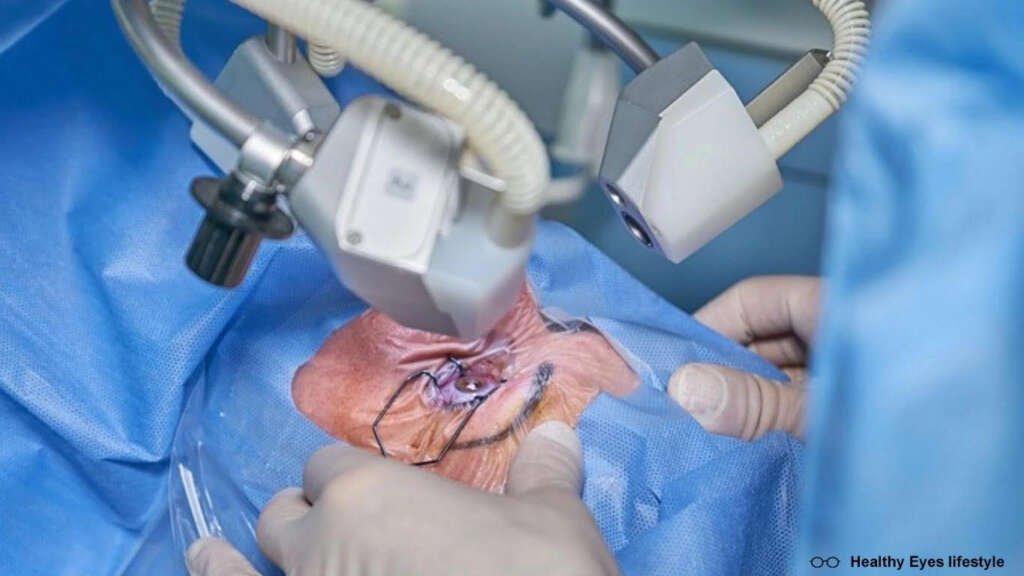Share This Article
Table of Contents
Imagine starting your day without needing to reach for your glasses or fumble with contact lenses. It’s a life-changing reality for countless individuals who’ve undergone vision correction surgery. But if you’re considering taking this step, you’ve likely come across two popular procedures: LASIK Surgery and PRK. Understanding the differences between these surgeries can feel overwhelming, but with the right information, you can confidently decide which is best for you.

Understanding LASIK and PRK: An Overview
When it comes to vision correction, LASIK and PRK are two of the most advanced and widely used techniques. Both rely on laser technology to reshape the cornea, but their methods differ slightly, leading to unique benefits and considerations for each.
What Is LASIK Surgery?
LASIK, or Laser-Assisted In Situ Keratomileusis, is a minimally invasive procedure. It involves creating a thin flap in the cornea, reshaping the underlying tissue with a laser, and repositioning the flap for healing. This technique is renowned for its quick recovery and precise results, making it a preferred option for many.
Key features of LASIK include:
- A short procedure duration, often completed within 15 minutes per eye.
- Minimal discomfort during and after the surgery.
- A quick return to normal activities, typically within a day or two.
What Is PRK Surgery?
PRK, or Photorefractive Keratectomy, differs slightly. Instead of creating a corneal flap, the surgeon removes the outer layer of the cornea (epithelium) to access the underlying tissue. After reshaping the cornea with a laser, a protective contact lens is applied to aid healing. PRK is often recommended for individuals with thinner corneas or specific eye conditions.
PRK’s defining characteristics include:
- A longer recovery time compared to LASIK, with most patients experiencing discomfort for a few days.
- No flap creation, which reduces the risk of certain complications.
- Equally effective long-term results as LASIK.
Quick Comparison Table
| Feature | LASIK | PRK |
| Recovery Time | 1-2 days | 5-7 days |
| Procedure Duration | ~15 minutes | ~15 minutes |
| Ideal Candidates | Normal corneas | Thin/irregular corneas |
| Long-term Results | Similar for both surgeries | Similar for both surgeries |
How LASIK Surgery Works
Step-by-Step Process
- Preparation: Your eyes are numbed with anesthetic drops, and a device is used to keep your eyelids open.
- Creating the Flap: A thin flap is created on the cornea using a microkeratome or femtosecond laser.
- Reshaping the Cornea: The surgeon uses a laser to reshape the cornea, correcting refractive errors.
- Repositioning the Flap: The flap is gently repositioned and naturally adheres without stitches.
Benefits of LASIK Surgery
- Quick recovery time (most patients resume normal activities within 24 hours).
- Minimal discomfort during and after the procedure.
- Effective for correcting nearsightedness, farsightedness, and astigmatism.
Drawbacks to Consider
- Potential for temporary dry eyes.
- Not suitable for individuals with very thin corneas or certain eye conditions.

How PRK Surgery Works
Step-by-Step Process
- Preparation: Like LASIK, anesthetic drops are applied, and a device holds your eyelids open.
- Removing the Epithelium: The outer layer of the cornea is gently removed using a laser or alcohol solution.
- Reshaping the Cornea: A laser reshapes the cornea to correct vision.
- Healing Aid: A soft contact lens is placed over the eye to protect it during the healing process.
Benefits of PRK Surgery
- No corneal flap, reducing the risk of flap-related complications.
- Suitable for individuals with thin or irregular corneas.
- Offers similar long-term vision improvement as LASIK.
Drawbacks to Consider
- Longer recovery time compared to LASIK.
- Initial discomfort and blurred vision during the healing process.
Comparing PRK vs. LASIK: Which Is Better for You?
Key Factors to Consider
- Corneal Thickness: If you have thinner corneas, PRK may be the safer choice.
- Recovery Time: LASIK offers a quicker recovery period, with many patients achieving clear vision within 24 hours.
- Lifestyle: Athletes or individuals in high-risk professions may prefer PRK due to the absence of a corneal flap.
- Age and Eye Health: Certain conditions like dry eye syndrome or significant prescription changes can influence your suitability for either surgery.
Cost Comparison
While costs can vary by location and provider, here’s a general breakdown:
- LASIK: $2,000–$3,000 per eye.
- PRK: $1,800–$2,500 per eye.
Pros and Cons of LASIK and PRK
Advantages of LASIK
- Faster recovery time.
- Minimal discomfort.
- Suitable for a wide range of refractive errors.
Advantages of PRK
- No risk of flap-related complications.
- Ideal for thin or irregular corneas.
- Equally effective as LASIK in the long term.
Limitations
- LASIK: Potential for dry eyes and flap-related issues.
- PRK: Longer recovery time and initial discomfort.
Making an Informed Decision
When comparing these procedures, remember to prioritize your long-term eye health and consult with an experienced ophthalmologist to weigh the pros and cons in the context of your unique needs.

What to Expect After Surgery
Recovery Timeline for LASIK
- Clear vision typically achieved within 24-48 hours.
- Most patients return to normal activities within a day or two.
Recovery Timeline for PRK
- Initial discomfort and blurry vision for 3-5 days.
- Full recovery can take 1-2 months.
Post-Surgery Tips
- Avoid rubbing your eyes.
- Follow your doctor’s instructions for eye drops and medication.
- Wear protective eyewear as directed.
- Limit screen time during the initial recovery phase to reduce eye strain.
Long-Term Care
- Schedule regular follow-ups with your eye surgeon.
- Protect your eyes from UV exposure by wearing sunglasses.
- Stay hydrated to maintain overall eye health.
Frequently Asked Questions (FAQ)
Is LASIK surgery painful?
No, LASIK is performed under local anesthesia, so you won’t feel pain during the procedure. Mild discomfort may occur during the healing process, but it’s usually short-lived.
How long do the results of LASIK and PRK last?
Both procedures offer permanent vision correction, though natural aging or other conditions may impact your vision over time.
Can I undergo LASIK or PRK if I have astigmatism?
Yes, both LASIK and PRK are effective for correcting astigmatism, as well as other refractive errors.
Are there any risks associated with LASIK and PRK?
Both procedures are considered safe, but potential risks include dry eyes, glare, or halos around lights, especially during night driving.
How do I know which surgery is right for me?
The best way to determine your suitability for LASIK or PRK is to consult with a qualified ophthalmologist who can assess your eye health and vision needs.
Conclusion: Making the Right Choice
Both LASIK and PRK are excellent options for vision correction, each with its own set of advantages. Your decision should be guided by factors like your corneal thickness, lifestyle, and recovery preferences. Speak with a trusted eye surgeon to explore your options and take the first step toward clearer vision.
Ready to take the next step? Schedule a consultation with a vision specialist today and discover how life-changing clear vision can be!



